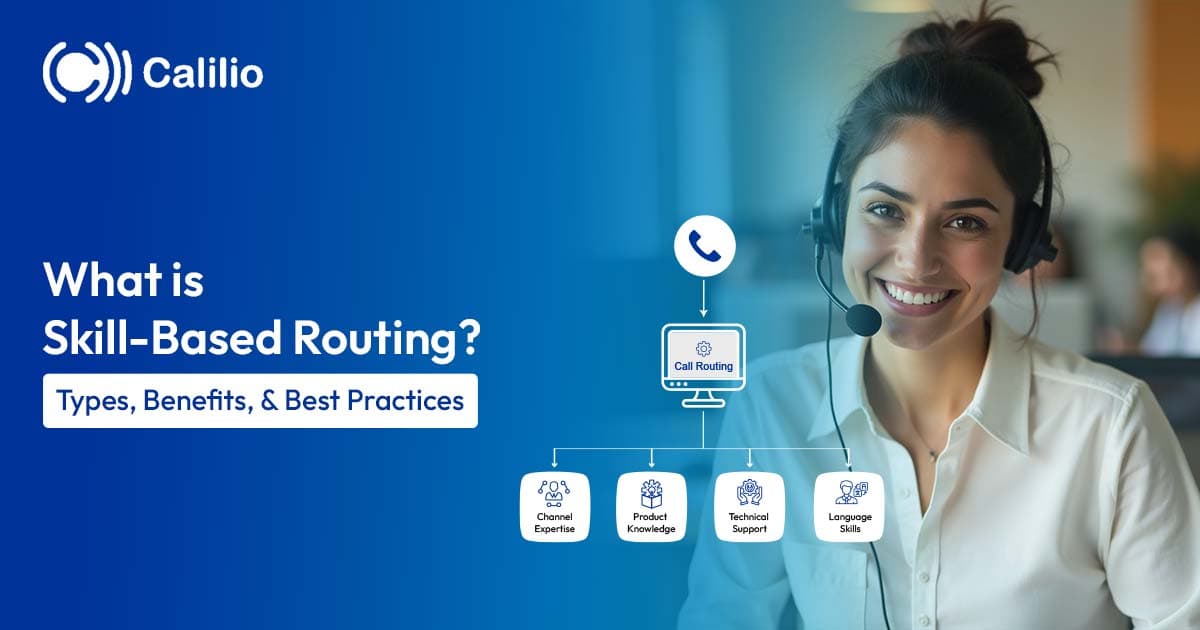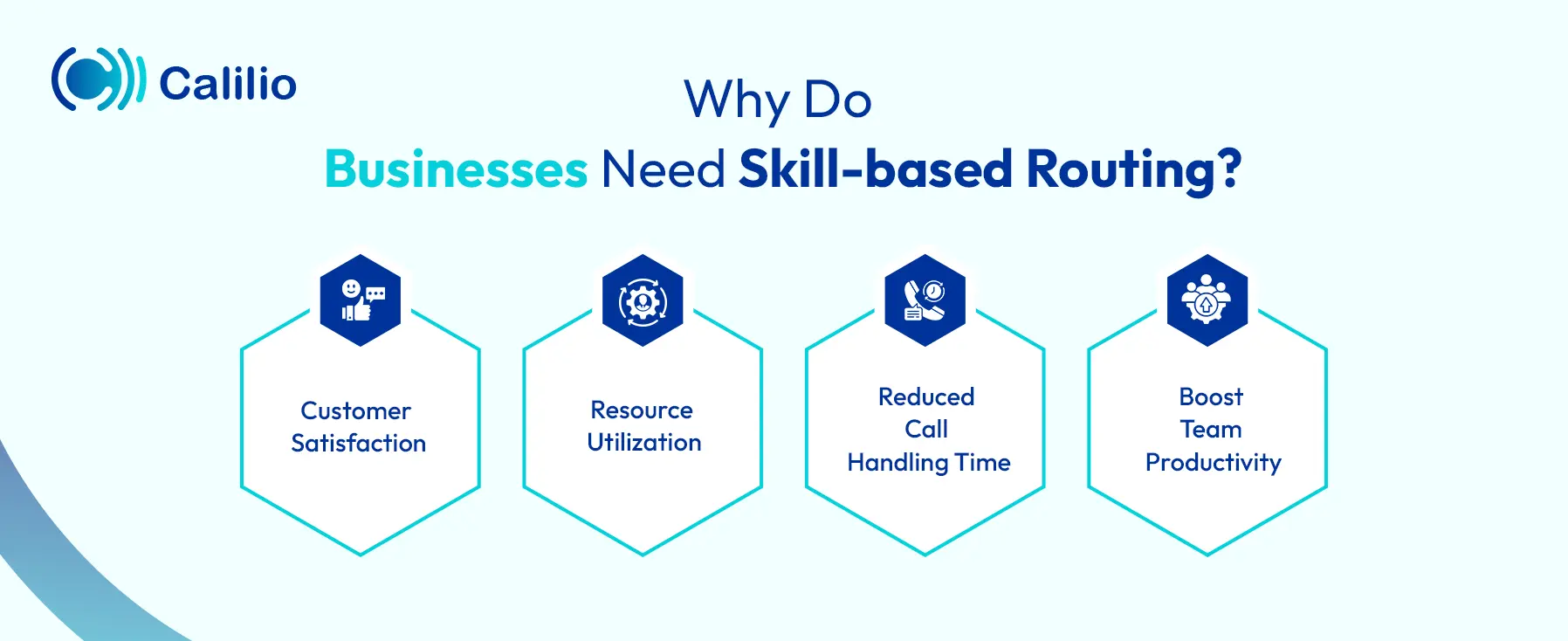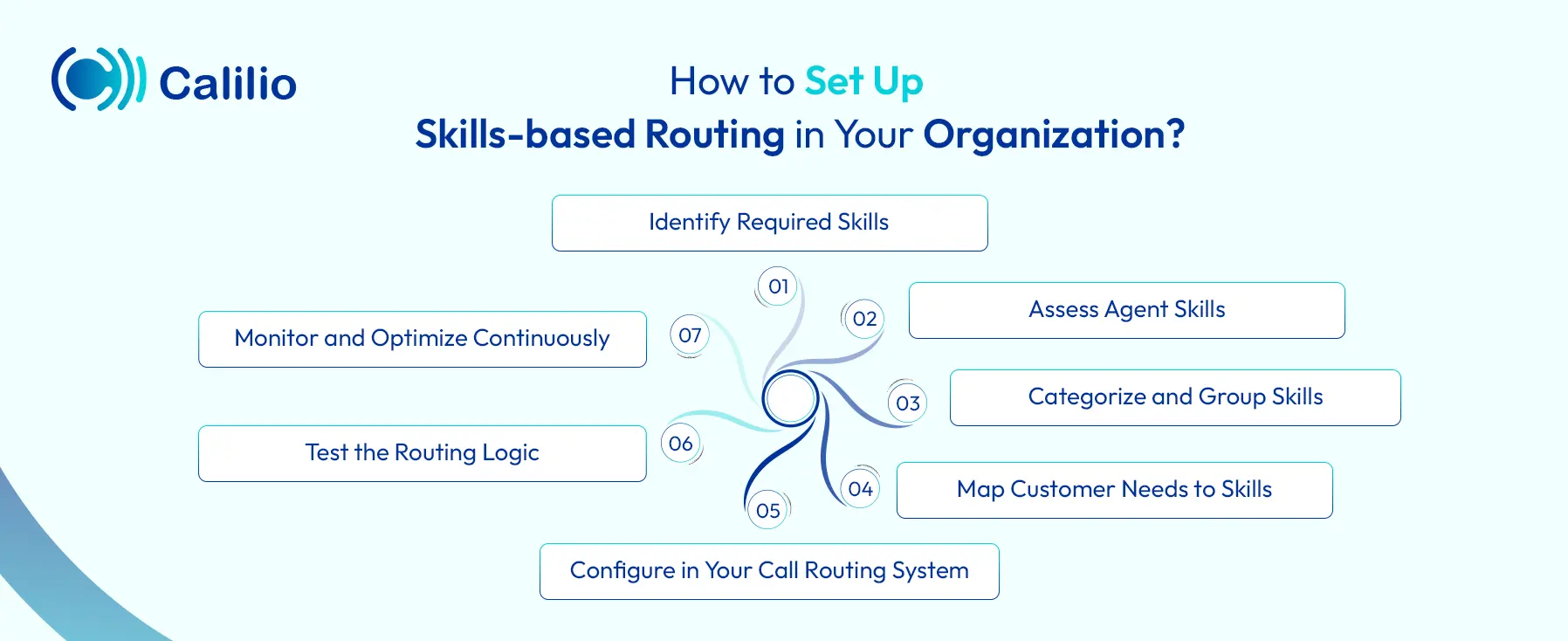What is Skill-Based Routing? Everything You Need to Know

When customers reach out to a business, they expect quick and accurate answers. But if their call or message keeps bouncing between agents, frustration grows and satisfaction drops.
Skill-based routing solves this problem by directing customer queries to the most qualified agent based on skills like product knowledge, language, or technical expertise. Unlike traditional routing methods that focus only on availability, this approach ensures customers get connected to the right person the first time.
In this guide, we’ll cover what skill-based routing is, how it works, its benefits, types, and best practices for setting it up in your organization. By the end, you’ll know exactly how it can improve customer experience, reduce call handling time, and boost your team’s productivity.
Key Highlights:
Skill-based call routing connects customers with agents who have the right expertise, like product knowledge, technical support, or language skills.
Skill-based call routing differs from other routing methods by focusing on expertise, not just availability or fairness.
As skills-based routing focuses on agent expertise, it leads to higher first-call resolution and better customer satisfaction.
Best practices for skill-based routing include regularly updating agent skill profiles, starting with a simple setup and scaling gradually, and balancing automation with human oversight. You must also provide ongoing training to agents and continuously track performance to optimize routing efficiency.
What is Skill-Based Routing?
Skill-based routing is a type of call routing in which customers are connected to the most qualified agent for the specific inquiry or issue, rather than just sending calls to the next available agent. The system uses predefined rules, such as product knowledge, technical expertise, or language skills, to match the customer with the best-fit representative.
For example, if there is a French-speaking customer, the call will be routed to the agent with fluency in the French language. This ensures effective communication and helps streamline the overall call center workflow.
How Does Skills-based Routing Work?
Skill-based routing matches customer inquiries with the agent best equipped to handle them, using a structured process.
Here’s how it works:
- Step 1: First, the system collects customer details and intent through IVR menus, CRM data, or AI-powered NLP that analyzes voice or chat.
- Step 2: All gathered details, like account history or selected options, are attached to the call as metadata.
- Step 3: The routing engine then works by applying rules or AI algorithms to determine the most suitable agent for each case.
- Step 4: If multiple agents qualify, the system may choose based on their idle time and highest proficiency rating.
- Step 5: The system performs real-time agent state tracking to ensure calls are only sent to agents who are in a ready state, avoiding interruptions or unnecessary delays.
- Step 6: Lastly, performance data, such as resolution rates, handling times, and customer satisfaction scores, is stored in the system. This optimization helps AI models and supervisors refine skill mappings and rules over time.
Key Differences Between Skill-Based Routing & Other Routing Methods
Skill-based call routing is different from other methods because it connects customers with the most qualified agent based on expertise, not just availability or workload. It prioritizes quality service and better customer satisfaction, while other routing types mainly focus on fairness or speed.
Category | Round Robin Routing | First Available Routing | Fixed / List-Based Routing | Least Occupied Routing | Skill-Based Routing |
| How It Works | Calls are distributed evenly among agents in a fixed order or sequence. | Directs the call to the first agent who becomes available. | Calls always go to a specific agent or set of agents based on predefined rules. | Directs calls to the agent handling the fewest active interactions. | Matches customer needs with the most qualified agent based on skills. |
| Pros | Fair workload distribution; simple setup. | Fast response times; reduces wait time. | Consistency: customers may speak to the same agent repeatedly. | Balances workload; avoids agent burnout. | Higher first-call resolution; improved satisfaction; efficient use of resources. |
| Cons | Doesn’t consider skills or customer needs; may cause multiple transfers. | No skill consideration; the customer may reach an unqualified agent. | Overburdens some agents; lacks flexibility; not scalable. | Ignores skill sets; not always efficient for complex queries. | More complex setup; requires skill mapping and ongoing updates. |
| Best Use Case | Small teams where all agents have similar skill sets. | High-volume environments with simple queries. | VIP customers or cases where continuity with the same agent matters. | Large teams handling similar types of calls. | Businesses with diverse services, multilingual support, or technical requirements. |
Why Do Businesses Need Skill-based Routing?
Skill-based routing is more than just a call distribution method; it’s a strategy that directly impacts customer experience, agent performance, and overall business efficiency. By ensuring every customer reaches the right agent from the start, businesses can solve problems faster and build stronger relationships.

Customer Satisfaction
When a customer connects with agents who truly understand their issues, they feel valued and cared for. Skill-based routing improves first-call resolution rates, reduces frustration from transfers, and creates a smoother support experience. The result is higher satisfaction and stronger customer loyalty.
Resource Utilization
Not every agent has the same strengths. Skills-based routing ensures each agent focuses on what they do best, whether that’s handling technical issues, sales calls, or multilingual support. This efficient use of resources prevents overloading certain agents while keeping workloads balanced.
Reduced Call Handling Time
Routing calls to the right person from the beginning cuts down on wasted time. Customers don’t have to repeat themselves to multiple agents, and agents can resolve issues more quickly because they already have the right expertise. This lowers the average handling time for each call.
Boost Team Productivity
By aligning tasks with agent skills, productivity naturally improves. Agents spend less time on calls they aren’t equipped to handle and more time delivering quality support. This not only enhances team morale but also drives better performance across the call center.
What are the Different Types of Skill-based Routing?
Standalone skill-based routing, multi-skill-based routine, omnichannel skills-based routing, and conversation priority-based routing are the different types of skill-based routing.
1. Standalone Skill-Based Routing
In this method, calls are routed purely based on a single skill match. For example, if a customer selects “Spanish support,” the system directly connects the call to an agent fluent in Spanish. It’s straightforward and best for businesses with simple support needs.
2. Multi-Skill Routing
Here, the system routes calls to agents who hold multiple relevant skills. For instance, a caller might need “Spanish + Technical Support.” The system finds an agent who can handle both. This type ensures complex issues are solved without multiple transfers.
3. Omnichannel Skills-Based Routing
Omnichannel skills-based routing extends beyond voice calls to include chat, email, and social media. The system directs each interaction to the agent most skilled in that specific channel to create an omnichannel contact center. For example, a social media query about billing goes to an agent trained in both “social support” and “billing issues.”
4. Conversation Priority Skill-Based Routing
This method adds urgency and priority to the routing logic. Calls or messages are not only matched by skills but also prioritized by context, such as VIP customers, high-value leads, or urgent complaints. This ensures critical cases reach the right skilled agent faster.
Connect Every Customer to the Right Agent with Advanced Call Routing
How to Set Up Skills-based Routing in Your Organization?
To implement skill-based routing, begin by identifying the key skills your customers frequently require. Next, assess your agents’ abilities and group them into clear skill categories. Once defined, map customer needs to these skills and configure the routing logic in your call management system.

- Step 1: Identify Required Skills
Start by listing the skills your customers usually need help with. These may include language, product knowledge, technical expertise, or sales ability. - Step 2: Assess Agent Skills
Evaluate your agents and record their strengths. Use tests, past performance data, or certifications to create an accurate skill profile for each agent. - Step 3: Categorize and Group Skills
Group related skills into categories (e.g., “Billing Support,” “Technical Troubleshooting,” “Language Support”) to make routing easier and more structured. - Step 4: Map Customer Needs to Skills
Define how customer queries should be matched with skills. For example, a technical query in Spanish should route to an agent with both “Technical Support” and “Spanish” skills. - Step 5: Configure in Your Call Routing System
Set up your contact centre software or business phone system to recognize these skill groups. Modern solutions let you create skill tags and apply routing logic directly in the dashboard. - Step 6: Test the Routing Logic
Run test calls and interactions to make sure customers are routed correctly. Adjust skill priorities or fallback options where necessary. - Step 7: Monitor and Optimize Continuously
Use call analytics, customer feedback, and agent performance data to refine the routing rules. Add new skills or adjust existing ones as your business and customer needs evolve.
Best Practices of Skill-Based Routing
To get the most out of skill-based routing, businesses should regularly update agent skills profiles, balance automation with human oversight, provide regular training to the agents, and consistently monitor the performance of the system.
Following these practices helps ensure the system runs smoothly and continues to deliver value.
- Keep Skills Updated: Regularly review and update agent skill profiles as products, services, or team members change.
- Start Simple, Scale Later: Begin with a few essential skills and expand as you understand customer needs better.
- Balance Automation with Human Oversight: Use AI and routing algorithms, but allow supervisors to make manual adjustments for special cases.
- Train Agents Continuously: Encourage agents to learn new skills so they can handle more diverse queries over time.
- Monitor Performance Data: Track metrics like first-call resolution, wait times, and customer satisfaction to refine your routing strategy.
Wrapping Up
Skill-based routing takes customer support beyond basic call distribution. By matching every query with the most qualified agent, it reduces call transfers, solves queries faster, and keeps customers satisfied. At the same time, it boosts agent productivity as they only look after the types of issues that they’re most skilled at.
Calilio takes this further by combining skill-based call routing with advanced features like call insights, IVR, and CRM integration. It ensures every interaction is handled smarter, faster, and with the right context.
Your Phone System Just Got Cheaper
Virtual numbers from just $2/month
Call rates starting as low as $0.016/min
The most cost-effective VoIP phone system for businesses
Powered by advanced AI telephony features
Compare low-cost business phone systems
Frequently Asked Questions
Is skill-based routing only for large call centers?
No. Small businesses can also benefit from skill-based routing. Even a few agents with different skill sets can make customer interactions smoother.
How is skill-based routing different from IVR?
Does skill-based routing require AI?

Still have questions?
Can’t find the answer you’re looking for? Please chat with our friendly team.
Stay in the loop
Get the latest call insights, trends, and updates delivered straight to your inbox.
By subscribing, you agree to receive updates from Calilio.
You can unsubscribe anytime.
Phone numbers
Get International Phone Numbers
Singapore
|Australia
|New Zealand